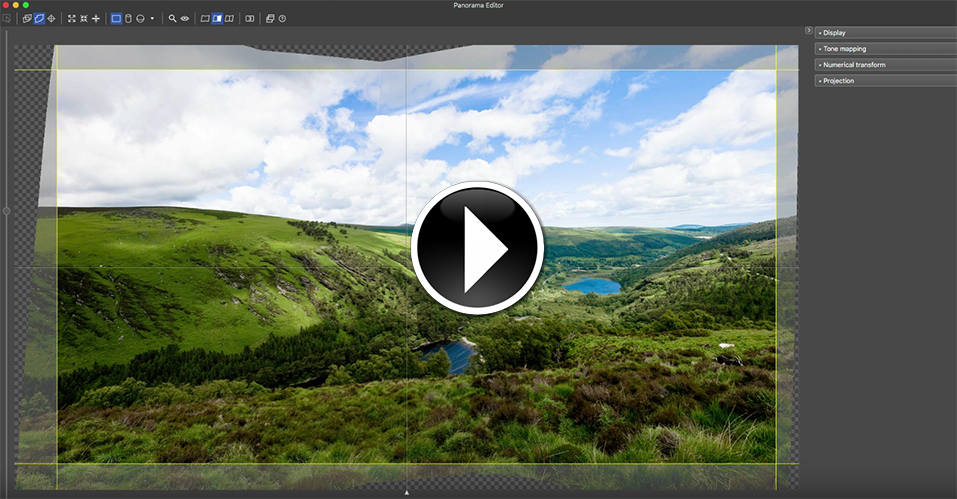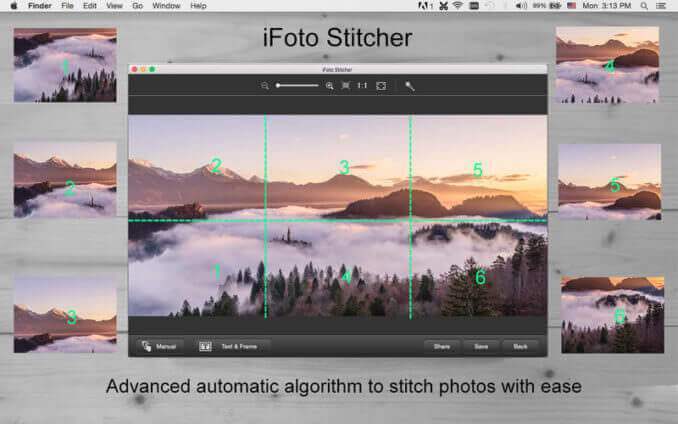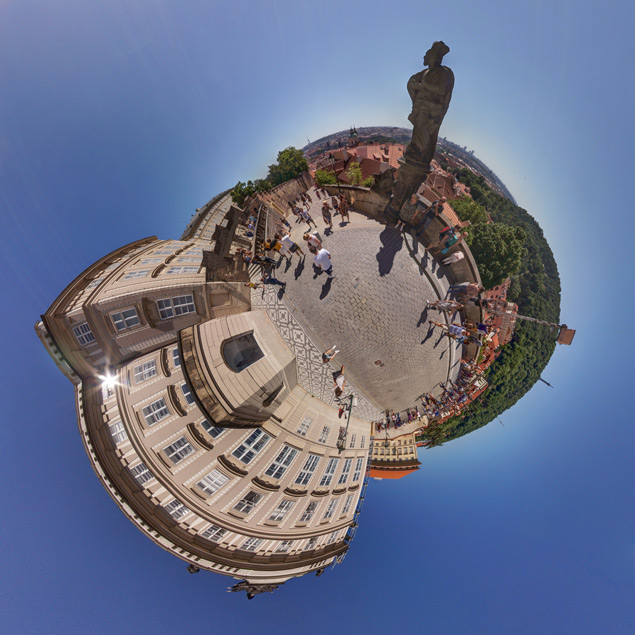

- PTGUI PHOTO STITCHING SOFTWARE FULL
- PTGUI PHOTO STITCHING SOFTWARE SOFTWARE
- PTGUI PHOTO STITCHING SOFTWARE LICENSE
I’ve shot a number of panoramas with a sloppy, handheld technique, so being able to tweak the framing is essential. One of my favorite features is the ability to quickly and dynamically adjust the projection, rotation, and centering. You can also create spherical, “little planet,” and cube face projections. PTGui offers a wide range of projections, from the essential rectilinear to the obscure Vedutismo. If needed, you can then mask out parts of individual images (think pedestrians, cars, or a blurry tree branch).įor the basic panoramas, the last step is choosing your projection. While you can tweak these points manually, I’ve not yet found an image out of place. From here, you can click to align images: this aligns the images via control points, connecting each pair of images at specific points. If your images have EXIF metadata, PTGui should be able to automatically recognize your lens and camera, calibrating those specific settings for you. In PTGui, the first step is to load the images. From here, it’s easy to load the images into PTGui and begin the stitching process. With the basics done, I sync the settings across and export 16-bit TIFFs to my SSD. While PTGui supports raw files and a 16-bit workflow, I find it easier to work with the single shot, rather than try and do basic adjustments to a 500-megapixel finished image. With my images in Lightroom, I grab one frame with representative highlights and shadows and apply the basic adjustments. The actual process of creating a panorama with PTGui is remarkably simple, at least for the workflow I’ve developed.

PTGUI PHOTO STITCHING SOFTWARE SOFTWARE
The recommended hardware includes 16 GB of RAM, an SSD for image storage, and a card with support for OpenCL - these are all essentially required for a positive panorama stitching experience with any software solution, in my opinion.
PTGUI PHOTO STITCHING SOFTWARE LICENSE
PTGui is available for Windows and MacOS, with a personal license able to be installed on three computers. There’s a slight learning curve to some of the buttons, especially if you’re new to panoramas, but fortunately, the hover-text is usually pretty explanatory.
PTGUI PHOTO STITCHING SOFTWARE FULL
On small screens, flip between the two windows maximized to full screen, while on a single large screen, you can run them side by side and give each a dedicated monitor on a multi-monitor setup. I feel it would work well on any screen size. The layout is customizable, to an extent, with the primary interface really being two windows, with one controlling project settings and the second being a resizable viewport for seeing the panorama and making adjustments directly on it. The overall interface is very clean, with a contemporary dark theme.

What’s even nicer is that you can dig deeper as necessary, tweaking the masking, crop, projection, or other settings as needed. It's an incredibly easy flow that still gives you the same convenience as Lightroom or Photoshop’s pano assistant, but with far more power under the hood. From here, you can load images, align them with one click, then save the resulting panorama. When you first open the software, you’re actually greeted by that Project Assistant wizard. I still haven’t touched some of the projections, the HDR functionality, or the masking tools, but I appreciate that they’re there. You can really choose how much you want to dig into the different features. With the wizard, you can load images, align them, and create a panorama in about three clicks. Now, don’t confuse this depth for it being cumbersome or unusable.

To get a sense of how much more control is offered, consider these two screenshots comparing the controls offered by Lightroom when stitching and one of the dozens of screens you can access when working in PTGui. PTGui belongs to the category of in-depth panorama stitching programs that offer a huge library of features, complex projections (the way your set of images are actually mapped), and powerful tools for adjusting how those images are blended.


 0 kommentar(er)
0 kommentar(er)
